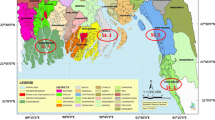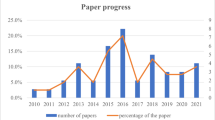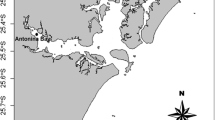Abstract
Microcystins (MCs), the most common cyanobacterial toxins in freshwaters, can accumulate in aquatic animals in free and bound forms. MCs therefore pose a risk to human health upon consumption of contaminated fish tissues, as they cause severe liver damage and death with potential carcinogenic effects. While there have been extensive studies on free MC contents in fish tissues, the detection of bound MCs in fish is largely unexplored. In the present study, both free and bound MCs were monthly monitored in tilapia fish from three tropical fishponds in Egypt for one year. Fishpond waters contained high concentrations of MCs (18–44 µg/l). Free MCs were estimated in tilapia fish organs at levels up to 11.8 ng/g in intestines, 8.3 ng/g in livers and 0.38 ng/g in edible tissues. Concentrations of bound MCs in edible tissues as determined by Lemieux oxidation technique (15,000–19,000 ng/g fresh weight, FW) were several-folds higher than free MCs. The estimated daily intake (EDI) for free MCs (0.0006–0.002 μg/kg/day MCs) in edible tissues was lower than the WHO limit (0.04 µg/kg/day), while EDI of bound MCs exceeded this limit by a factor of 77–2396. Therefore, both free and bound MCs in fish tissues should be considered when fish are monitored for human consumption.




Similar content being viewed by others
References
APHA (1995) Standard methods for the examination of water and wastewater, 14th edn. American Public Health Association, Washington, DC
Berry JP, Lee E, Walton K, Wilson AE, Bernal-Brooks F (2011) Bioaccumulation of microcystins by fish associated with a persistent cyanobacterial bloom in Lagode Patzcuaro (Michoacan, Mexico). Environ Toxicol Chem 30:1621–1628
Cadel-Six S, Moyenga DS, Magny S, Trotereau Edery M, Krys S (2014) Cylindrospermopsin accumulation and release by the benthic Cyanobacterium Oscillatoria sp. PCC 6506 under different light conditions and growth phases. Environ Pollut 185:333–339
Carmichael WW, An J (1999) Using an enzyme linked immunosorbent assay (ELISA) and a protein phosphatase inhibition assay (PPIA) for the detection of microcystins and nodularins. Nat Toxins 7:377–385
Charles P, Deblois S, Philippe J (2010) Relationship between photosynthetic processes and microcystin in Microcystis aeruginosa grown under different photon irradiances. Harm Algae 9:18–24
Chen L, Hu Y, He J, Chen J, Giesy JP, Xie P (2017) Responses of the proteome and metabolome in livers of zebrafish exposed chronically to environmentally relevant concentrations of microcystin-LR. Environ Sci Technol 51:596–607
Chorus I, Bartram J (1999) Toxic cyanobacteria in water: a guide to their public monitoring and management. E and FN Spon, London, pp 416–417
Dyble J, Gossiaux D, Landrum P, Kashian DR, Pothoven S (2011) A kinetic study of accumulation and elimination of microcystin-LR in yellow perch (Perca flavescens) tissue and implications for human fish consumption. Mar Drugs 9:2553–2571
Gibble CM, Kudela RM (2014) Detection of persistent microcystin toxins at the land-sea interface in Monterey Bay, California. Harm Algae 39:146–153
Greer B, Maul R, Campbell K, Elliott CT (2017) Detection of freshwater cyanotoxins and measurement of masked microcystins in tilapia from Southeast Asian aquaculture farms. Anal Bioanal Chem 409:4057–4069
Guzmán-Guillén R, Prieto AI, Moreno I, Soria ME, Cameán AM (2011) Effects of thermal treatments during cooking, microwave oven and boiling, on the unconjugated microcystin concentration in muscle of fish (Oreochromis niloticus). Food Chem Toxicol 49:2060–2067
Hauser-Davis RA, Lavradas RT, Lavandier RC, Rojas EGA, Guarino AW, Ziolli RL (2015) Accumulation and toxic effects of microcystin in tilapia (Oreochromis niloticus) from an eutrophic Brazilian lagoon. Ecotoxicol Environ Saf 112:132–136
Komárek J, Anagnostidis K (2005) Cyanoprokaryota. 2. Teil: Oscillatoriales. Süßwasserflora von Mitteleuropa; Band 19/2. Elsevier, Műnchen, p 759
Lance E, Neffling MR, Gerard C, Meriluoto J, Bormans M (2010) Accumulation of free and covalently bound microcystins in tissues of Lymnaea stagnalis (Gastropoda) following toxic cyanobacteria or dissolved microcystin-LR exposure. Environ Pollut 158:674–680
Magalhaes V, Soares R, Azevedo S (2001) Microcystin contamination in fish from the Jacarepagua Lagoon (Rio de Janeiro, Brazil): ecological implication and human health risk. Toxicon 39:1077–1085
Malbrouck C, Kestemont P (2006) Effects of microcystins on fish. Environ Toxicol Chem 25:72–86
Martins JC, Vasconcelos VM (2009) Microcystin dynamics in aquatic organisms. J Toxicol Environ Health B Crit Rev 12:65–82
Miles CO, Sandvik M, Nonga HE, Ballot A, Wilkins AL, Rise F, Jaabaek JA, Loader JI (2016) Conjugation of microcystins with thiols is reversible: base catalyzed deconjugation for chemical analysis. Chem Res Toxicol 29:860–870
Miller MA, Kudela RM, Mekebri A, Crane D, Oates SC, Tinker MT (2010) Evidence for a novel marine harmful algal bloom: cyanotoxin (microcystin) transfer from land to sea otters. PLoS One 5:12576
Mohamed ZA (2016) Harmful cyanobacteria and their cyanotoxins in Egyptian fresh waters—state of knowledge and research needs. Afr J Aquat Sci 41:361–368
Mohamed ZA, Al-Shehri AM (2009) Microcystin-producing blooms of Anabaenopsis arnoldi in a potable mountain lake in Saudi Arabia. FEMS Microbiol Ecol 69:98–105
Mohamed ZA, Al-Shehri AM (2013) Grazing on Microcystis aeruginosa and degradation of microcystins by the heterotrophic flagellate Diphylleia rotans. Ecotoxicol Environ Saf 96:48–52
Mohamed ZA, Bakr A (2018) Concentrations of cylindrospermopsin toxin in water and tilapia fish of tropical fishponds in Egypt, and assessing their potential risk to human health. Environ Sci Pollut Res 25:36287–36297
Mohamed ZA, Hussein AA (2006) Depuration of microcystins in tilapia fish exposed to natural populations of toxic cyanobacteria: a laboratory study. Ecotoxicol Environ Saf 63:424–429
Mohamed ZA, Carmichael WW, Hussein AA (2003) Estimation of microcystins in the freshwater fish Oreochromis niloticus in an Egyptian fish farm containing a Microcystis bloom. Environ Toxicol 18:137–141
Mohamed ZA, El-Sharouny HM, Ali WSM (2007) Microcystin concentrations in the Nile River sediments and removal of microcystin-LR by sediments during batch experiments. Environ Contam Toxicol 52:489–495
Mohamed ZA, Deyab MA, Abou-Dobara MI, El-Sayed AK, El-Raghi WM (2015) Occurrence of cyanobacteria and microcystin toxins in raw and treated waters of the Nile River, Egypt: implication for water treatment and human health. Environ Sci Pollut Res 22:11716–11727
Mohamed AZ, Bakr A, Soliman H (2018) Bioavailability of bound microcystins in mice orally fed with contaminated tilapia edible tissues: implications to human health. Toxicon 151:34–36
Neffling MR, Lance E, Meriluoto J (2010) Detection of free and covalently bound microcystins in animal tissues by liquid chromatography-tandem mass spectrometry. Environ Pollut 158:948–952
Pantelic D, Svircev Z, Simeunovic J, Vidovic M, Trajkovic I (2013) Cyanotoxins: characteristics, production and degradation routes in drinking water treatment with reference to the situation in Serbia. Chemosphere 91:421–441
Pawlik-Skowrońska B, Pirszel J, Kornijów R (2008) Spatial and temporal variation in microcystin concentrations during perennial bloom of Planktothrix agardhii in a hypertrophic lake. Ann Limnol 44:63–68
Pawlik-Skowrońska B, Toporowska M, Rechulicz J (2012) Simultaneous accumulation of anatoxin-a and microcystins in three fish species indigenous to lakes affected by cyanobacterial blooms. Oceanol Hydrobiol Stud 41:53–65
Rita DP, Valeria V, Silvia BM, Pasquale G, Milena B (2014) Microcystin contamination in sea mussel farms from the Italian southern Adriatic coast following cyanobacterial blooms in the artificial reservoir. J Ecosyst. https://doi.org/10.1155/2014/374027
Schmidt JR, Shaskus M, Estenik JF, Oesch C, Khidekel R, Boyer GL (2014) Variation of Microcystin content of different fish species collected from eutrophic lake. Toxins 5:992–1009
Smith JL, Schulz KL, Zimba PV, Boyer GL (2010) Possible mechanism for the food web transfer of covalently bound microcystins. Ecotoxicol Environ Saf 73:757–761
Svirčev Z, Baltić V, Gantar M, Juković M, Stojanović D, Baltić M (2010) Molecular aspects of microcystin-induced hepatotoxicity and hepatocarcinogenesis. J Environ Sci Health C 28:39–59
Tencalla FG, Diettrich D, Schlatter C (1994) Toxicity of Microcystis aeruginosa peptide toxin to yearling rainbow trout (Oncorhyncus mykiss). Aquat Toxicol 30:215–224
Valerio E, Vasconcelos V, Campos A (2016) New insights on the mode of action of microcystins in animals cells—a review. Mini Rev Med Chem 16:1032–1041
Van Apeldoorn ME, van Egmond HP, Speijers GJ, Bakker GJ (2007) Toxins of cyanobacteria. Mol Nat Food Res 51:7–60
WHO (1998) Guidelines for drinking water quality. Addendum to volume 1. Recommendations, 2nd edn. World Health Organization, Geneva
Wiegand C, Phlugmacher S, Oberemm A, Meems N, Beattie KA, Steinberg CEW, Codd GA (1999) Uptake and effects of microcystin-LR on detoxication enzymes of early life stages of zebrafish (Danio rerio). Environ Toxicol 14:89–95
Wu X, Xiao B, Li R, Wang Z, Chen X, Chen X (2009) Rapid quantification of total microcystins in cyanobacterial samples by periodate-permanganate oxidation and reversed-phase liquid chromatography. Anal Chim Acta 651:241–247
Zegura B, Volcc M, Lah TT, Filipic M (2008) Different sensitivities of human colon adenocarcinoma (CaCo-2), astrocytoma (IPDDC-A2) and lymphoblastoid (NCNC) cell lines to microcystin-LR induced reactive oxygen species and DNA damage. Toxicon 52:518–525
Žegura B, Gajski G, Štraser A, Garaj-Vrhovac V (2011) Cylindrospermopsin induced DNA damage and alteration in the expression of genes involved in the response to DNA damage, apoptosis and oxidative stress. Toxicon 58:471–479
Zhang D, Xie P, Liu Y, Qiu T (2009) Transfer, distribution and bioaccumulation of microcystins in the aquatic food web in Lake Taihu, China, with potential risks to human health. Sci Total Environ 407:2191–2199
Zhang D, Xie P, Chen J (2010) Effect of temperature on stability of microcystin in muscles of fish and its consequences for food safety. Bull Environ Contam Toxicol 84:202–207
Zurawell RW, Chen H, Burke E, Prepas E (2005) Hepatotoxic cyanobacteria: a review of the biological importance of microcystins in freshwater environments. J Toxicol Environ Health Part B Crit Rev 8(1):1–37
Acknowledgements
The authors appreciate and acknowledge the Deanship of Scientific Research at King Khalid University for providing ELISA kits and MC standards and funding this study through the collaborative Research Groups Program under Grant # R.G.P. 2-14-40
Author information
Authors and Affiliations
Corresponding author
Ethics declarations
Conflict of interest
The authors declare that there is no conflict of interest.
Additional information
Publisher's Note
Springer Nature remains neutral with regard to jurisdictional claims in published maps and institutional affiliations.
Electronic supplementary material
Below is the link to the electronic supplementary material.
Rights and permissions
About this article
Cite this article
Mohamed, Z., Ahmed, Z., Bakr, A. et al. Detection of free and bound microcystins in tilapia fish from Egyptian fishpond farms and its related public health risk assessment. J Consum Prot Food Saf 15, 37–47 (2020). https://doi.org/10.1007/s00003-019-01254-0
Received:
Revised:
Accepted:
Published:
Issue Date:
DOI: https://doi.org/10.1007/s00003-019-01254-0




